Learn More
- Looks at and follows a face
- Smiles at you
- Looks at hands for 3 seconds
- Closes finger in tight grasp
- Grasps rattle and holds for 30 seconds
- Lying on back, reaches for a toy
- Watches objects and tracks in all direction when laying on stomach or on the back
- Props on forearms when laying on the stomach
- Picks up rattle grasping string, pulls toy towards them
- Grasps and holds cube/ small toy
- Reacts to disappearance of slowly moving object
- Continues a familiar activity by initiating movements involved
- Attempts to hold the bottle
- Coordinates suck/swallow/breath
- While on stomach, shifts weight to side to free arm to reach for toy
- Plays with hands and feet when laying on the back
- Bites and chews toys
- Plays with a toy in sitting
- While sitting, brings hands together to hold block, able to hold two objects and play with both
- Bangs cup on table
- Pokes finger into hole in pegboard
- Uses raking motion to obtain objects
- Plays 2-3 minutes with a single toy
- Lifts arms to parent
- Holds bottle independently
- Touches pellet (small objects) with fingers
- Feeds self a cracker/finger food
- While on stomach, shifts weight to side to free arm to reach for toy
- Plays with hands and feet when laying on the back
- Bites and chews toys
- Plays with a toy in sitting
- While sitting, brings hands together to hold block, able to hold two objects and play with both
- Bangs cup on table
- Pokes finger into hole in pegboard
- Uses raking motion to obtain objects
- Plays 2-3 minutes with a single toy
- Lifts arms to parent
- Holds bottle independently
- Touches pellet (small objects) with fingers
- Feeds self a cracker/finger food
- Plays with a toy with both hands in sitting
- Claps hands
- Attempts to obtain 3rd cube while holding a cube in each hand
- Looks for the toy when placed out of sight
- Able to remove pegs from peg board
- Drops and picks up toys
- Removes socks
- Takes ring stacker apart
- Finger feedsself-using thumb and index finger
- Begins to use a spoon
- Opens book
- Places cubes into a container and turns container over to dump out contents
- Places pegs in a pegboard
- Scribbles on paper
- Picks up 2 cubes with 1 hand
- Stacks rings on ring stacker
- Stacks 2-3 blocks
- Places 1-2 pieces into puzzle
- Points with index finger
- Imitates doing housework and other real life activities
- Shows understanding of color
- Matches objects, Nest 2-3 cups
- Identifies self in mirror
- Assists with dressing by extending arms and legs
- Removes socks and helps with dressing by extending arms and legs
- Stirs spoon in cup
- May refuse foods
- Brings spoon to mouth
- Holds and drinks from a cup with some spilling
- Indicates discomfort over soiled pants verbally or by gesture
- Sleeps nights 12-14 hours
- Turns pages in a book
- Places 3 shapes into the correct place in a puzzle
- Stacks 4-6 blocks, assembles 4 nesting cups
- Draws a vertical line and circular scribbles on paper
- Symbolic play with similar but not real objects
- Sorting and matching objects to pictures
- Matches sounds to animals
- Identifies 6 body parts
- Removes shoes with laces undone and puts shoes on with help
- Chews completely with rotary jaw movements
- Scoops food, feeds self with spoon with some spilling
- Gives up bottle, drinks form an open cup
- Plays with food
- Symbolic play with similar but not real objects
- Explores cabinets and drawers
- Opens doors by turning knobs
- Able to open screw top container
- Snips paper using scissors
- Begins to draw lines and circles on paper
- Copies a 4 block train or simple block design
- Dramatic play with dolls, Pretend play
- Will watch other children play but may not join in
- Points to 5-7 pictures of familiar objects or people
- Matches colors, Sorts shapes
- Enjoys being read to and looks at books independently
- Completes 3-4 piece puzzle
- Stacks rings in correct order
- Resists help, takes pride in achievements
- Uses fork
- Helps with bathing
- Blows nose with assistance
- Shows interest in toilet training
- Cuts paper in half
- Laces 3 holes
- Cuts across a line deviating no more than ¬Ĺ inch
- Draws a plus
- Traces a horizontal line
- Holds pencil with thumb and index finger with other three fingers against palm
- Interacts/plays with other children
- Shares/ takes turns
- Unbuttons buttons and buttons 1 button
- Washes and dries hands
- Brushes teeth with assistance
- Dresses self with supervision, Undress with assistance
- Can pour from a small pitcher
- Draws a square
- Cuts circle and a square
- Connects dots with a straight line
- Uses a tripod grasp
- Touches each finger to thumb
- Colors between vertical lines
- Able to buckle shoes or belt and zip zippers
- Uses toilet independently
- Folds paper in half twice with edges parallel
- Cuts out simple shapes
- Learns to write the alphabet
- Colors within the lines
- Holds a pencil with thumb and index finger
- Establishes right- or left-handedness
- Plays simple and competitive games
- Engages in cooperative play with other children
- Chooses clothes and gets dressed
- Learns to put shoes on the correct feet
- Learns to tie shoelaces
- Brushes teeth independently
- Writes upper- and lower-case letters easily
- Can copy from the board
- Can complete mazes
- Can ride a bike
- Can engage and attend to schoolwork
- Can solve simple dilemmas
- Can resolve minor conflicts with peers
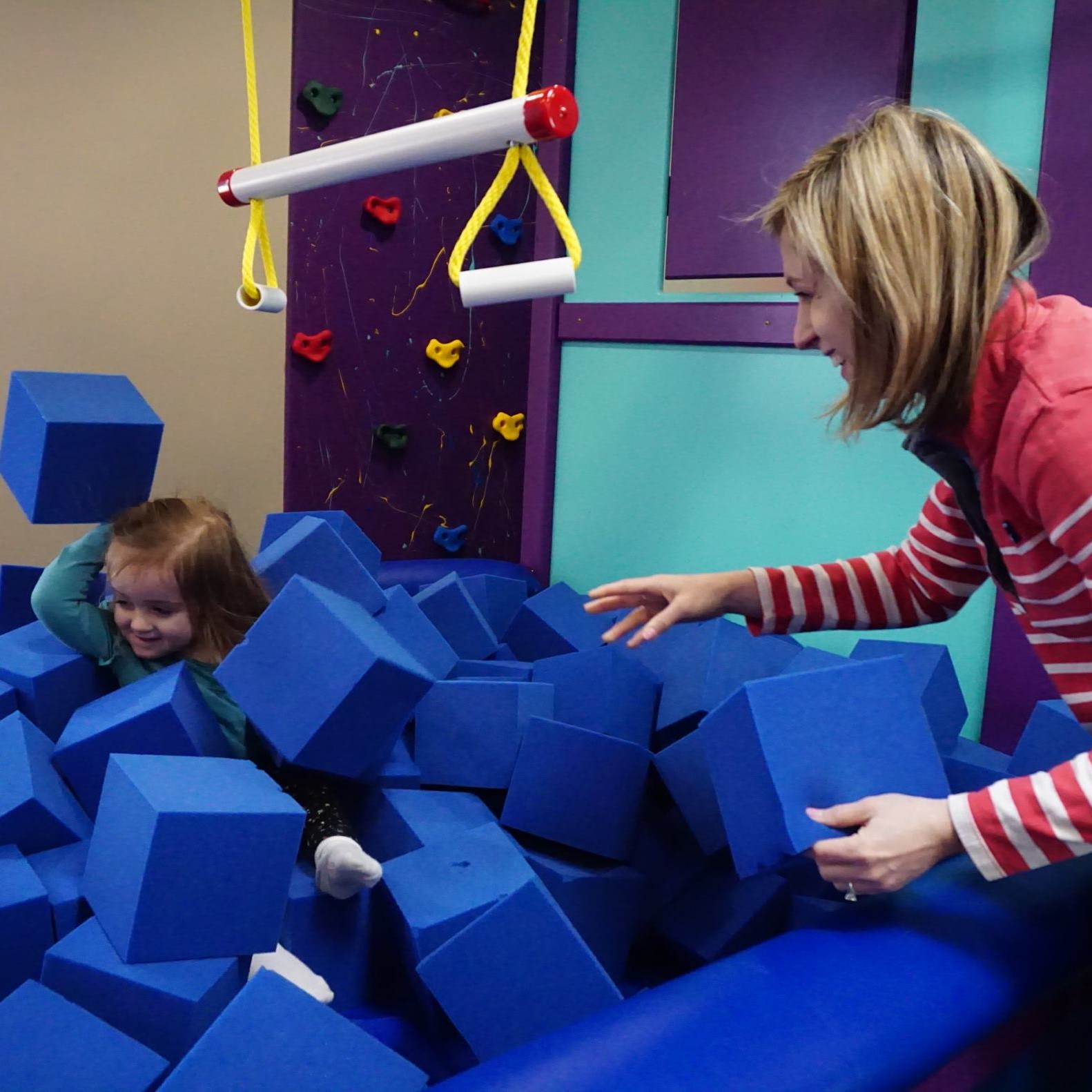
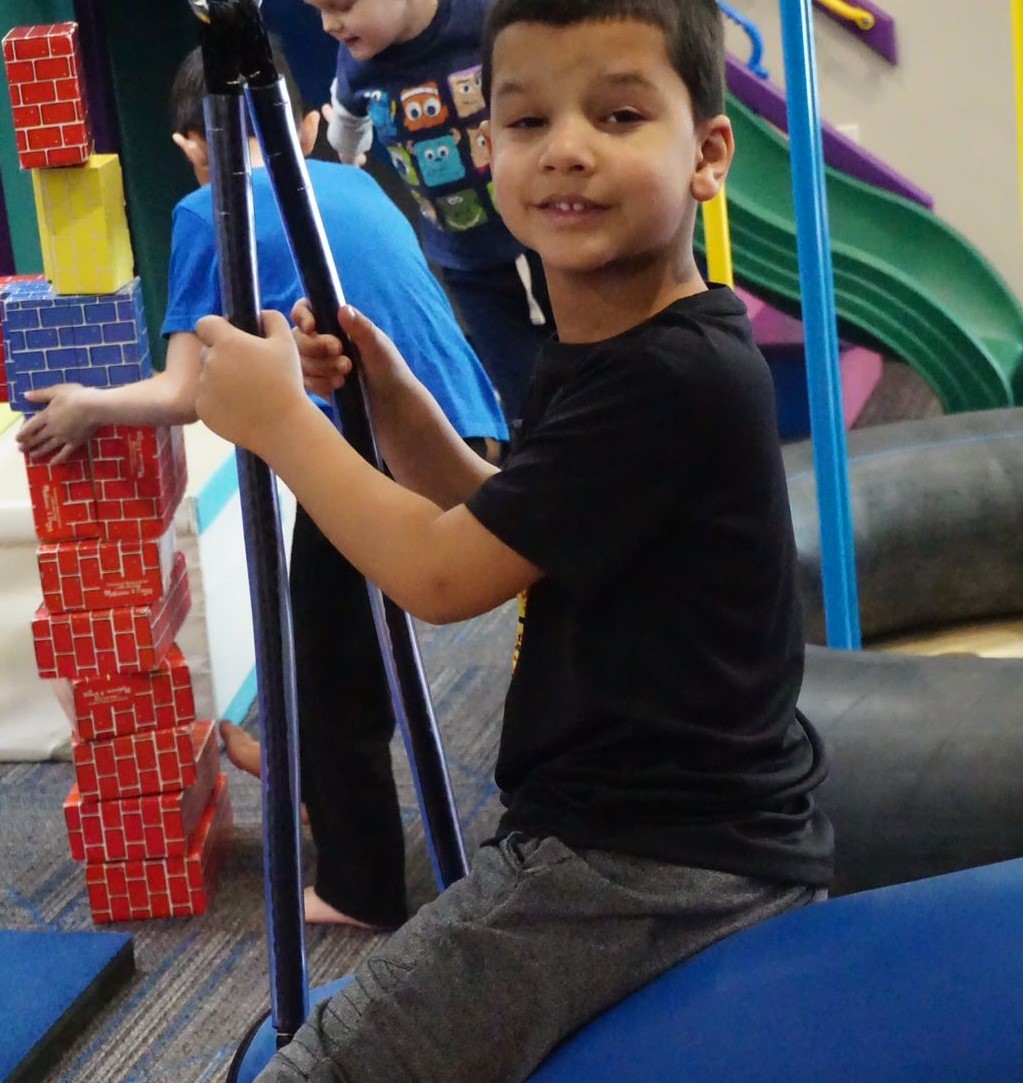
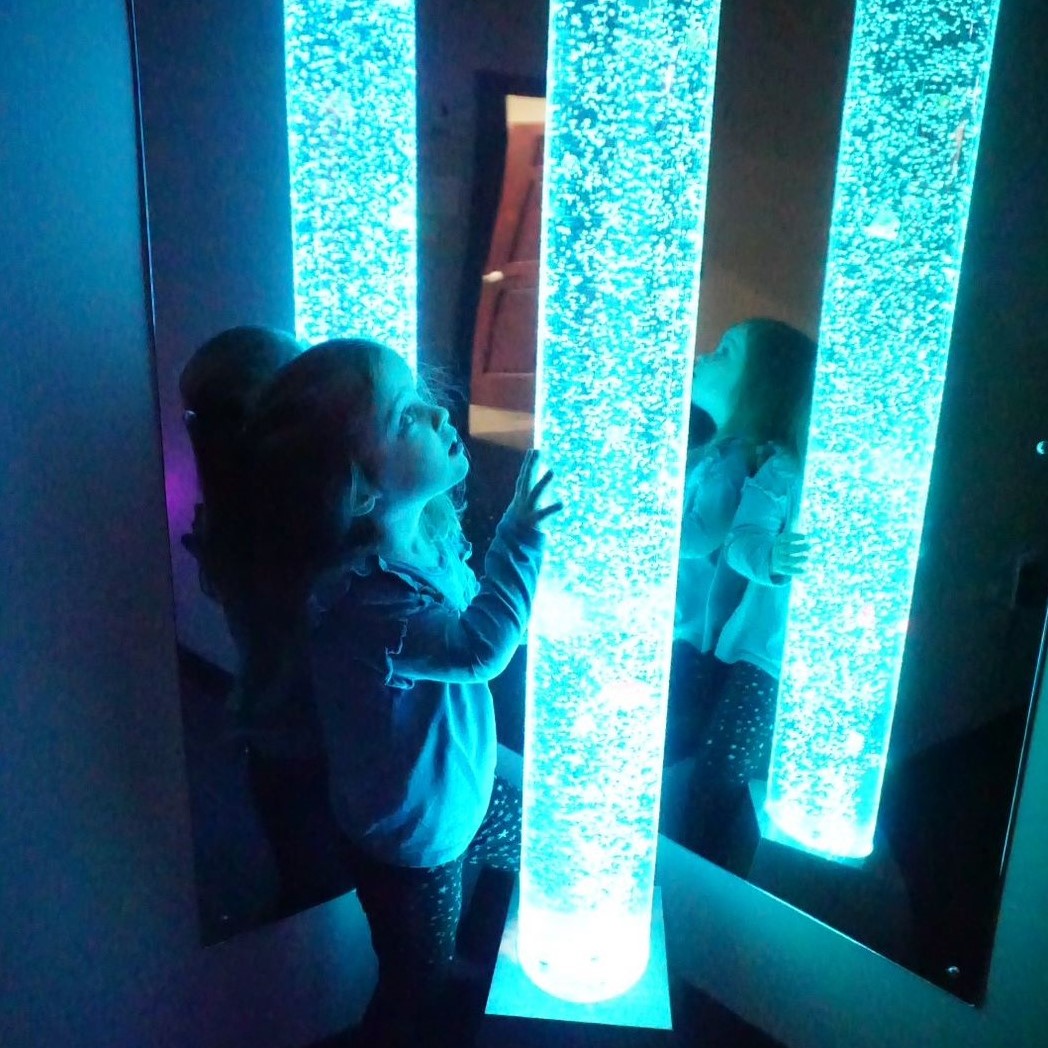
Sensory integration is how our brain receives and processes sensory information so we can carry out age-appropriate activities in everyday life. For most children, Sensory Integration develops in the course or ordinary childhood activities. Motor planning ability is a natural outcome of this process, as is the ability to adapt to incoming sensations. For some children sensory integration does not develop as efficiently as it should. When this process is disordered, a number of problems in learning, development, and behavior may become evident.
Sensory Processing Disorder (SPD)exists when sensory signals are either not detected or don't get organized into appropriate responses. Difficulty in processing and misinterpreting information may occur in one or more of the following systems:
- Tactile: We use this information to ‚Äúsense‚ÄĚ when and what we touch and being able to discriminate its features, such as texture, size, shape, or temperature.
- Vestibular: We use this information to plan for movements and help us maintain our balance.
- Proprioception: We use this information to plan movements so that you can coordinate your body. Sense of body awareness.
- Visual: Helps us to see what we need to see and filter out what we don’t need to focus on.
- Auditory: Helps us to determine what sounds are important and what sounds can be ‚Äútuned out.‚ÄĚ
- Taste: Sense of taste and allows us to detect all the flavors that come into our mouth.
- Olfactory: Sense of smell and influences sense of taste.
- Interoception: It is an awareness of the internal state of our body. e.g. hunger, sleep, bowel movement, emotions etc.
- Sensory Over-Responsive: These kids have responses that are too quick, too big, or last too long when
compared to typical kids. Examples include:
- Excessively fearful of movement experiences such as swing, slides, or otherplayground equipment
- Reacts negatively to the feel of certain clothing or tags
- Strong dislike of hair washing, brushing hair, or brushing teeth
- Will only eat foods of certain taste, textures, or temperatures/ picky eating habits that are excessive
- Gets bothered by everyday sounds and lights. (vacuum cleaner/toilet flushing/fluorescent lights)
- Difficulty transitioning from one activity/ situation to another
- Avoids eye contact
- Difficulty with managing their emotions and behavior / self-regulation skills
- Overreact to small problems
- Sensory Under-Responses: These kids feel things too late and too little. Examples include:
- Delayed motor skills
- Lack of response to sights and sounds
- Seems unaware of food around or on their face when eating
- Seems unaware of food in their mouth and difficulty with oral motor skills
- High pain tolerance, doesn’t notice cuts or bruises
- Low muscle tone, poor posture
- Clumsiness
- Sensory Cravers/Seekers: These kids seek out sensory input at a greater intensity or duration then their
peers. Examples include:
- Loves to be constantly moving, roughhousing and appear happiest in stimulating environments
- Will throw them themselves on the ground
- Will push or bump into others to get input
- Touches everything
- Puts nonfood items in their mouth
- Sensory Based Motor Disorder/ Dyspraxia: These kids have difficulty with motor planning (dyspraxia) or
difficulties with overall muscle tone and trunk strength (postural control). Examples may include:
- Difficulty with fine motor activities (scissors, using utensils, zippers, buttons etc.)
- Difficulty dressing themselves
- Illegible handwriting
- Difficulty with navigating through a crowd
- Appears clumsy, awkward, and accident prone
- Difficulty in thinking of, planning, and executing skilled movements or novel tasks
- Appear weak and/or poor endurance with motor tasks
- Sensory Discrimination Disorder: These kids have difficulty in understanding accurately what is seen,
heard, felt, or tasted. They have difficulty determining the characteristics of the sensory stimuli. Examples
include:
- Visually, do I see a letter ‚ÄúP‚ÄĚ or ‚ÄúQ‚ÄĚ?
- Do I hear the sound ‚Äúcat‚ÄĚ or ‚Äúcap‚ÄĚ?
- Do a feel a coin or is it something else?
- Am I falling to my side or backwards?
- Do I smell a flower or something else?
Our program includes a comprehensive evaluation using formal and informal testing, clinical observations, sensory questionnaire, and detailed parent interviewing to determine your child‚Äôs specific sensory-motor needs and developing an individualized plan to address them. Treatment strategies are based on the principals of Ayres Sensory Integration ¬ģ, guiding your child through activities that challenge his or her ability to respond appropriately to sensory input by making a successful, organized response.We aim to help improve function and participation in daily life using some of the strategies listed below-
- Provide Remedial Intervention: This involves the use of sensory motor equipment and activities that provide the client with tactile, proprioception, and movement (vestibular) experiences to promote motor planning, bilateral coordination, postural control, emotional regulation, etc. For example, this can include equipment such as swinging from a trapeze bar into a foam pit to work on motor planning of timing and sequencing, while getting tactile, vestibular, and proprioception input when crashing into the pit. Or use of suspended swings while working on tossing a bean bag into a target to get the vestibular input they need to regulate so they can engage in a purposeful play activity.
- Provide recommendations for environmental accommodations, adaptations, and modifications: This may include things like wearing head phones for noise reduction due auditory hypersensitivity, using strategies and tool for better emotional regulation and/or improved attention at home and school such as bear hugs, fidgets, compression vests, weighted blankets, or movement cushions on their chair. Also, your therapist may recommend environmental modifications to increase or decrease the sensory stimulation in a space, such as low lighting, sensory rooms, sensory stations, types of furnishings and equipment, etc.
- Establish Sensory Diet Program: We develop an individualized sensory diet plan, that allows your child to work towards a ‚Äújust right state‚ÄĚ so they can better regulate their system at home, school and in the community for learning, playing, and socializing with others. This involves a menu of supportive sensory strategies and environmental adaptations. Examples of this may include use of a therapy ball, heavy work activities, brushing program, use of a quiet area, weighted blanket, etc. Recommendations are given for tailored physical activities, accommodation and use of materials such as stress balls, sensory kits to be utilized during the day to help with self-regulation.
- Educate Clients and Caregivers: Our therapist understand the sensory systems and how limitations in processing may occur and affect your child in everyday life. We work together with parents, teachers and other professionals to work towards supporting our clients and educate each other to work towards the functional goals established.
- Improved function at home, school, and in the community
- Longer attention span
- Improved ability to better self-regulate emotions, attention, and arousal state appropriate to the demands of the situation
- Improved independence with activities of daily living skills
- Increased vocalization
- Enhanced motor planning skills and abilities
- Initiation of play skills and participation in recreational activities
- Improved self-confidence with challenging tasks
- Improved organization of sensory information
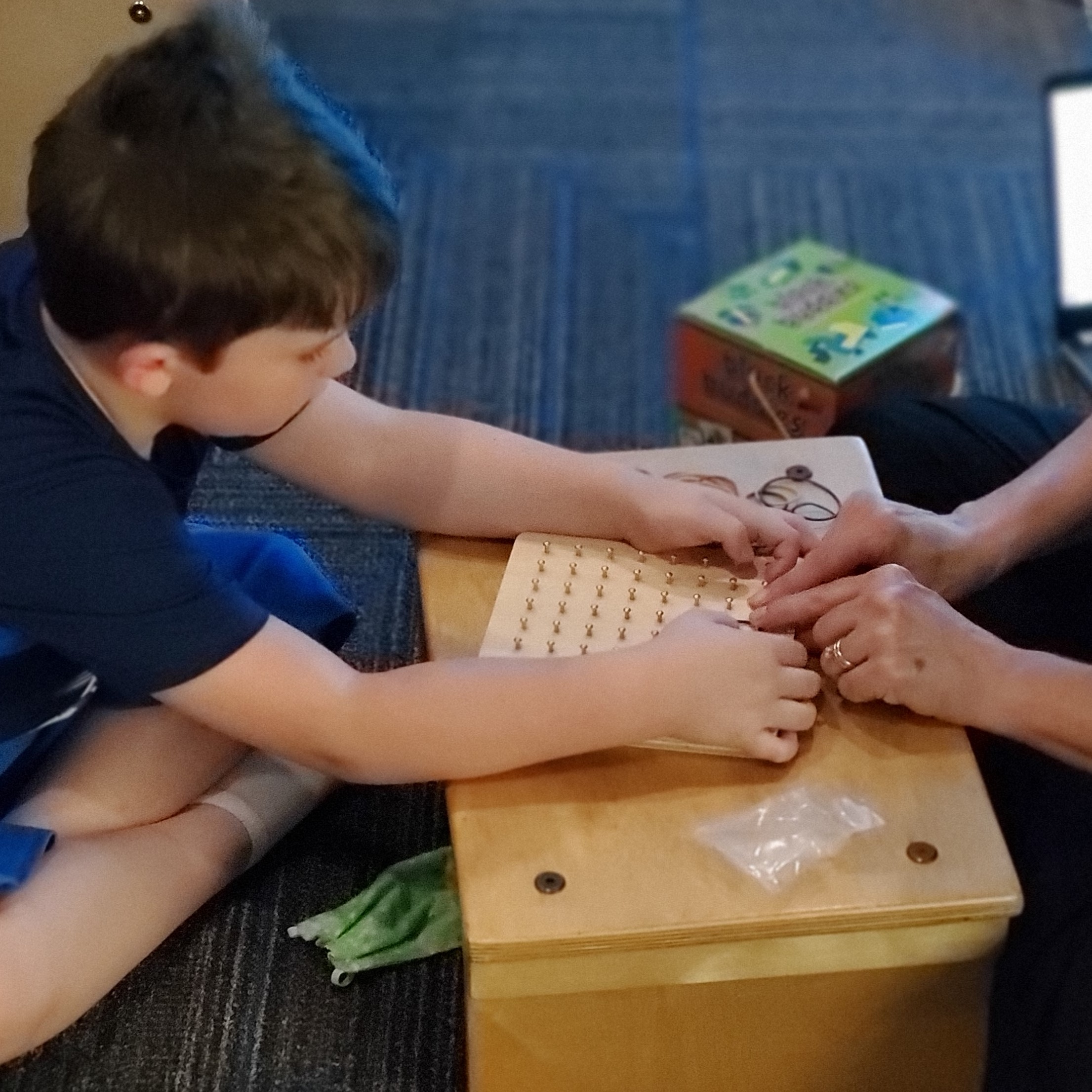
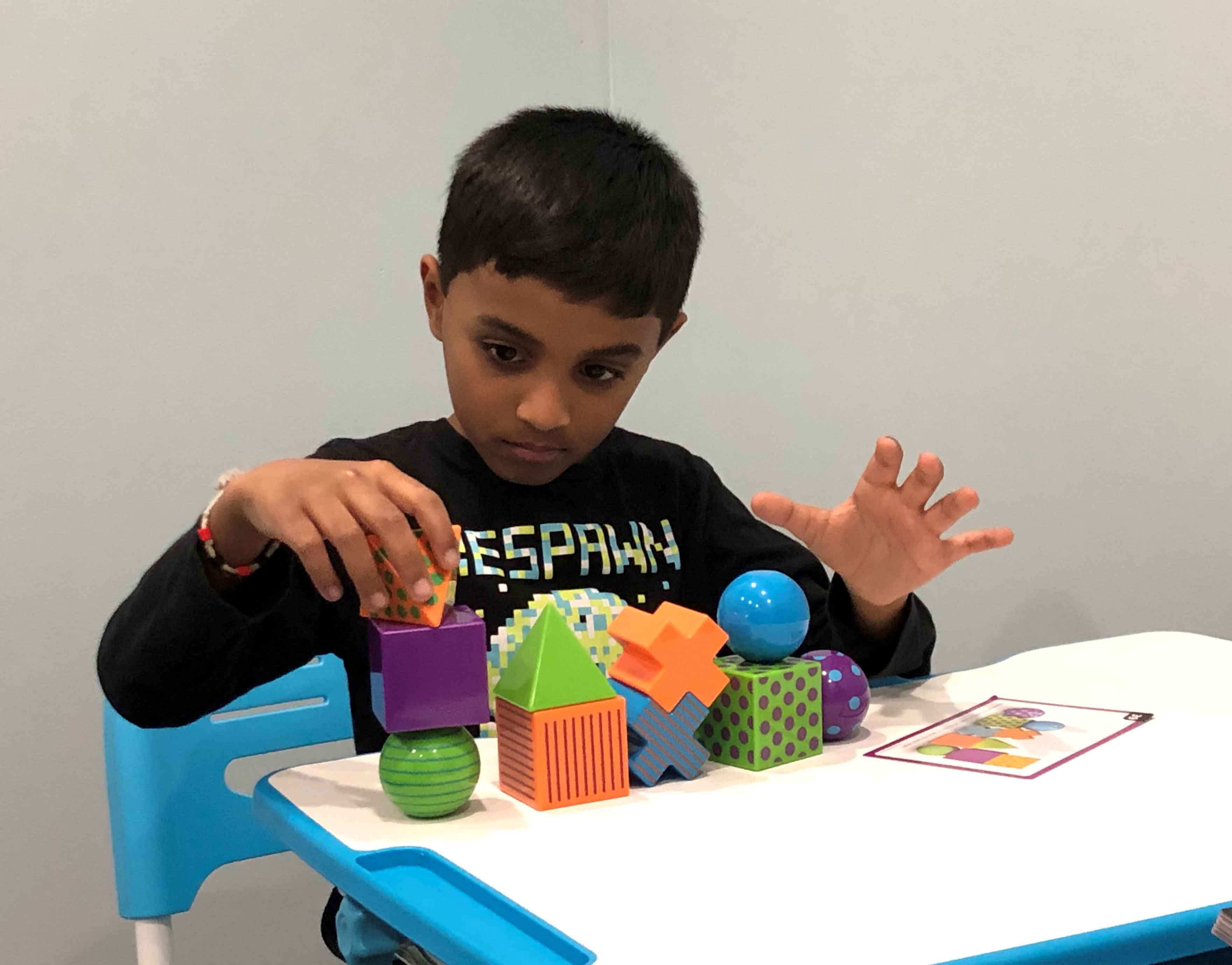
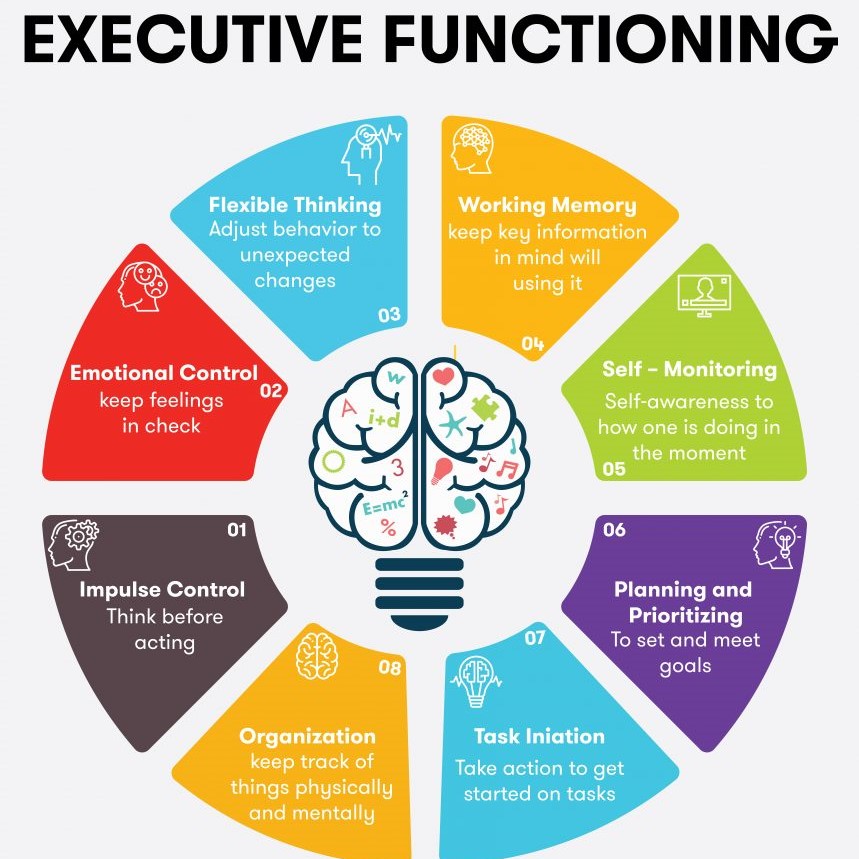
Executive Functioning skills are cognitive skills that help us plan, organize, make decisions, move between situations or thoughts, control our emotions, control impulsivity, and learn from past experiences. Simply stated, executive skills help us regulate our behaviorand get things done.Kids rely on these skills for everything from organizing their homework, carrying out simple chores, managing their emotions, or picking priorities.
Difficulty with executive functioningcan impact kids and young adults on a day to day basis. Some common signs are: trouble starting and/ or completing tasks, difficulty with following directions, organizing thoughts and managing time. Kids may also have trouble keeping track of their belongings and demonstrate panic or anxiety when routines ae changed.
Executive Functioning skills are learned throughout development and some kids need more structure, modeling, and assistance to achieve these skills. Our Occupational therapists provide formal and informal testing, conduct parent interviews, and utilize clinical observations to determine which areas of executive functioning are impacting function in daily life. Collaboratively, with the parents and teacherswe provide guidance to allow these skills to emerge, but also find the ‚Äėjust right challenge‚Äô so that natural learning opportunities can arise
- Establishment of routines and schedules
- Breaking things down and practicing difficult tasks in small steps
- Modifying tasks to match your child’s capacity
- Visual tools/strategies
- Teaching and utilizing self-regulation strategies
- Memory and matching activities/games
- Modifying the environment to achieve success toward the skill
- Changing the nature of the task (i.e., make the task shorter, build in variety or give choices, make the task more explicit)
Every child is different, but if your child has executive functioning issues that are impacting them in daily life, our occupational therapistsat Big Blue Canopy, would be happy to assist you in further identifying the area(s) of concern and development of strategies and goalsfor an individualized treatment plan
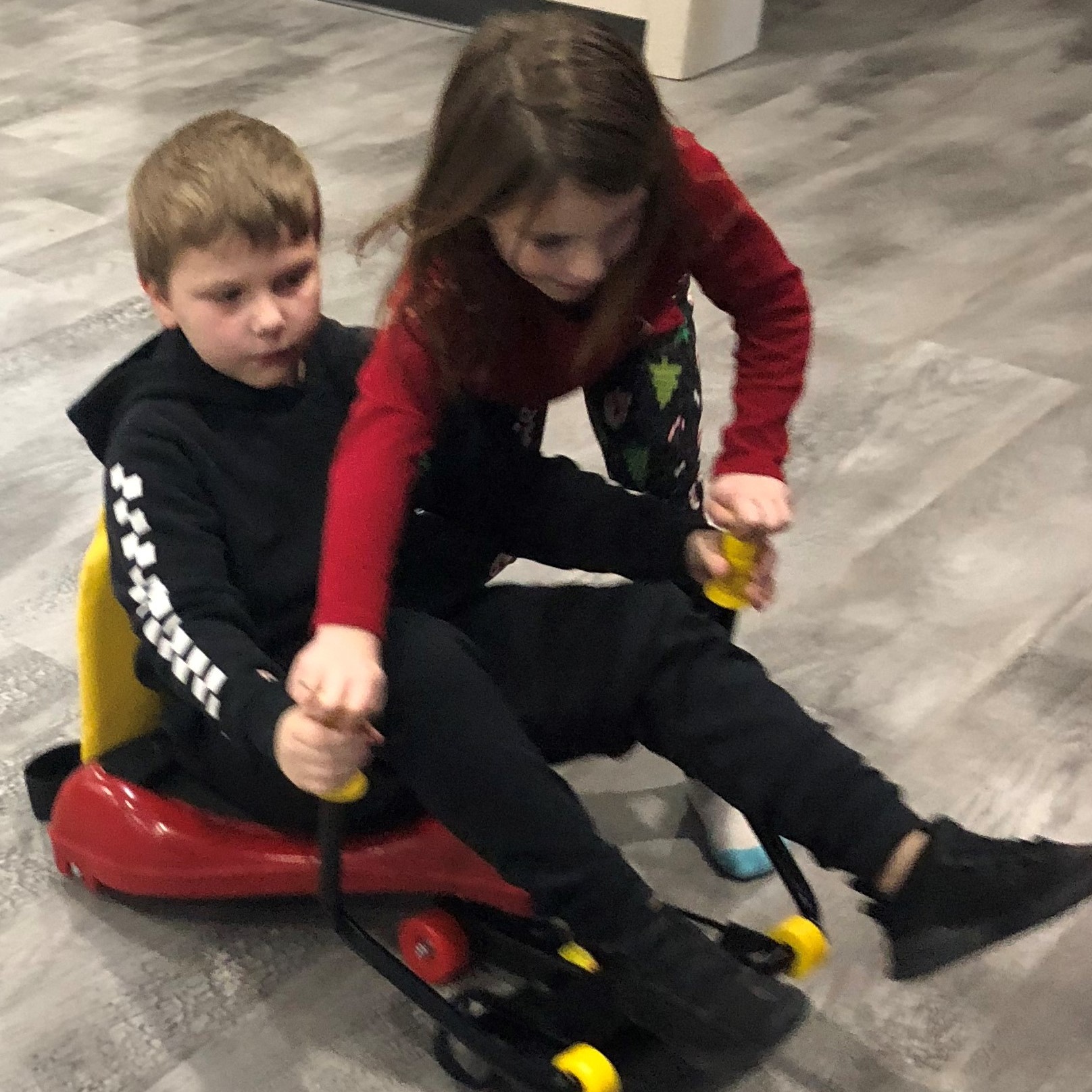
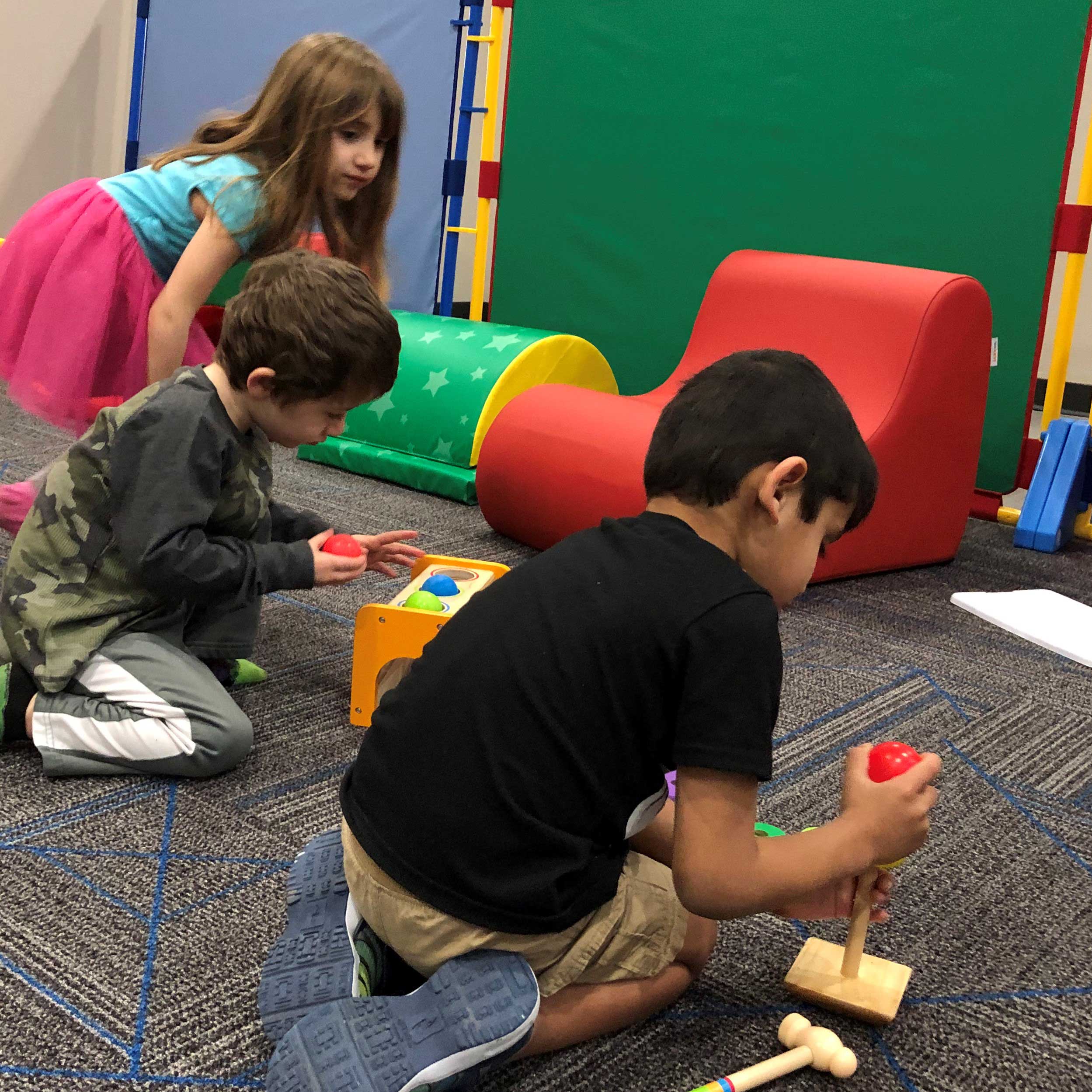

There are a variety of skills that are necessary when making connections and building social relationships with others. These skills may not come naturally for all children. Our therapists at Big Blue Canopy are trained to work on social skills and emotional regulation with a variety of ages and diagnoses. Teaching interpersonal skills, conflict resolution, and problem-solving skills will improve the child’s social interaction and ability to make social connections with others.
- Reading body language or identifying others’emotions
- Expressing their own emotions and feelings
- Self-regulation and managing emotions
- Transitions and changes in routines
- Turn-taking skills
- Engaging in joint play activities with others
- Making/keeping friends
- Initiating conversation with others
- Staying on topic in conversation
- Conversational turn-taking
- Non-verbal communication skills (e.g. eye contact, respecting others’ personal space, posture, etc.)
- How Does Your Engine Run? to improve self-regulation
- Zones of Regulation to teach child strategies for emotional and sensory self-management
- Superflex- A Super Hero Social Thinking Program
- Peer interaction/ Participating in a group
- Turn-taking activities
- Interrupting appropriately
- Solving problems/negotiating
- Pretend play
- Social Stories to provide explanation and prepare children for various social situations they may have a difficult time experiencing (e.g. going to the doctor)
- Conversation paths to organize the flow of conversation
- Question boards to facilitate question initiation in conversation
- Conversation sticks to establish appropriate conversational turn-taking

